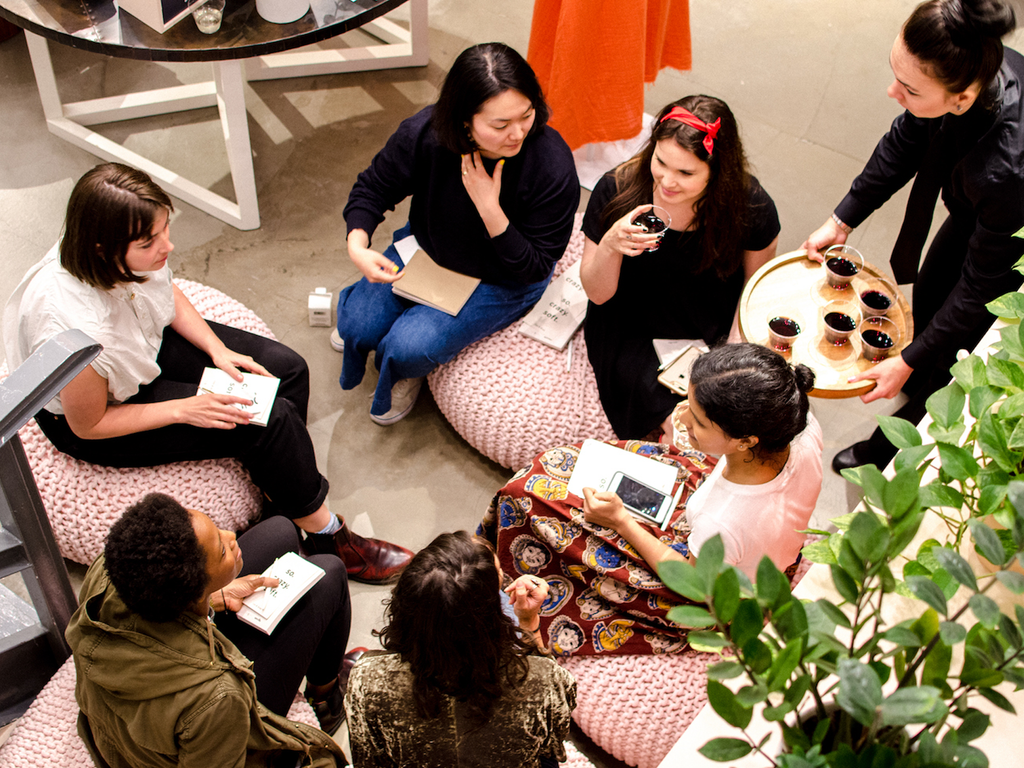I was raised in mostly white towns, and that was a deliberate decision. Growing up, rose-colored glasses were permanently affixed to my face and I believed obstacles were an illusion, regardless of skin tone. I was hopeful, but admittedly, I was a bit naive.
My mother always countered my optimism with caution, warning of the hindrances that lay ahead. She grew up in Nigeria, where America had been painted as the ultimate goal, and often reminded me of the culture shock she experienced upon her arrival.
It was why she chose to raise me in a “good” neighborhood where I’d be one of the few. She hoped it would give me a leg up so I wouldn’t face the harsh reality she did, and while it worked in some ways, it created a complex. I had worked overtime to assimilate into a culture that never fully embraced me and, as a result, did away with many pieces of my identity.
“Anyone with a phone and a WiFi password can create an inclusive community.”
That all changed when I went away to college, just a few hours away from my hometown. For the first time ever, my surroundings were heterogeneous. I strolled across campus and witnessed everything from a professor with a crown of braids leading a lecture, to allied students building safe spaces for those of various backgrounds. When homophobic and racial epithets were scrawled on bathroom doors one year, groups sprung into action, offering protection, and an ear for those who felt threatened. It was the first time I realized what it meant to feel comforted, surrounded, and heard by a community that made an effort to understand.
A few years later, when I moved to New York and foundedNovella, a writing club and storytelling salon for women, I pulled from a lot of those early experiences when planning what we would represent. The biggest red flag of my upbringing was a devastating level of “sameness” and I knew the community I was creating needed to be anchored in inclusivity, so “othering” had no chance.
Building a diverse, inclusive community with purpose is my proudest accomplishment. And the best part is, anyone with a phone and a WiFi password can do it. Here’s a few pointers on how to create the inclusive community you want to see.
Place PoC in outward-facing, ownership roles
As a Black female founder, I am proud to be a face many people first encounter when they come across Novella. However, we didn’t stop there: our team is comprised of over 80 percent women of color. Businesses often wash their hands once they’ve instated a PoC figurehead and people are wise to this.
Visibility is a powerful thing: Don’t let PoC talent stay behind the scenes. Encourage PoC who are involved in your project to get in front of the camera, to lead pitches, and sit on panels that represent your community. Be proactive in giving PoC opportunity to take on responsibility within your ranks.
Weave diversity and inclusion into the foundation of your community
“The Fenty effect” is when a brand suddenly adopts a mission of diversity in response to current trends, or the actions of a competitor—named after the swift adoption of inclusivity from beauty brands after the launch of Rihanna’s wide-range of Fenty Beauty products.
This shift does not go unnoticed. It’s apparent when you scroll down on a brand’s social feed a couple months prior and see no PoC in sight. Be thoughtful from the inception of your community and make sure it’s evident across platforms that everyone has a home in your space, early on.
Speak on issues that affect everyone, universally and specifically
Equal Pay Day is a monumental day, worthy of every acknowledgement it received in 2018 and the years before it. However, inclusivity means addressing the intersectional disparity that lies within Latina women, African American, Native American, and Asian American women as well.
When a community is cognizant of the differences within itself and actively seeks ways to support and enact change for those affected, it speaks volumes and lets people from different backgrounds know they are just as seen.
Give your members a voice
Members of your community are your biggest evangelists. By giving attendees and guests the opportunity to utilize your platform, you make your business human and allow a variety of real-life narratives to be shared and engaged with. Passing the microphone, whether on social media, on your website, or IRL is a simple way to show that all stories are welcome in your community.
Partner with like-minded brands
Be thoughtful with the companies, groups, and businesses you associate with. Do the extra leg work to see if a partner has been outspoken on the values you support, or has done something shady you don’t align with.
Be proud to collaborate with the communities you identify with and brands with the same mission, from labels that give back to women’s rights initiatives to charities that uplift underserved communities.



